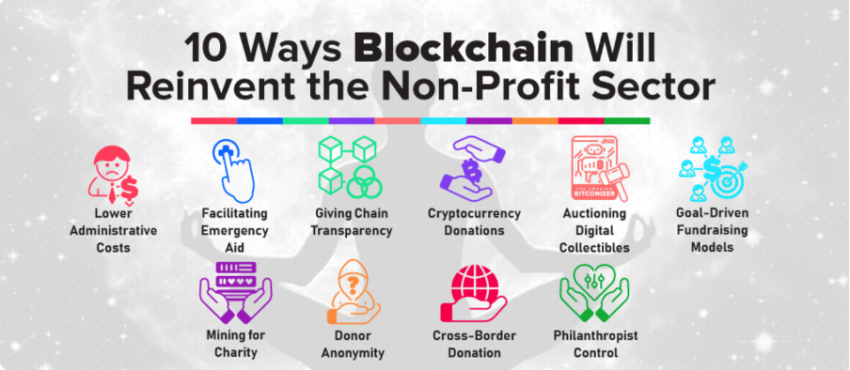Blockchain
The charity and nonprofit sectors are embracing blockchain as a means of showing transparency and accountability. However, some have started to express concern.
Charities are reporting declining numbers of people donating, although amounts raised remain stable as the wealthy give more. So the question is how to reverse the trend.
BBB Wise Giving Alliance (Give.org), a standards-based charity evaluator, conducted a survey of 2,000 people. They were asked whether they would consider donating to a charity using cryptocurrency. 73% said yes. There are many reasons for this – the most prominent one is the tax benefits.
Source: YouTube
In the U.S., the Internal Revenue Service (IRS) considers crypto as stock or property, and a donor can take the full deduction of its value without paying capital gain taxes if they donate directly in cryptocurrency.
If they cash out the cryptocurrencies, they would lose the money in taxes and thereby be able to give lesser money to charities.
Why the Need for Blockchain?
Blockchain has shown several use cases in the non-profit sector. Firstly, they have been effective financial tools for cross-border payments through remittances and crowdfunding and cutting transaction fees in cross-border payments.
Non-government organizations (NGOs) increasingly use blockchain for identity and property rights, especially for refugees who may not have many belongings.
They can be given an identity on the blockchain where everything is verifiable, and each one of the UN agencies or charities has access to that blockchain. They can distribute the individual’s resources to them or track what medical attention they need.
Blockchain can also act as an effective medium for donor engagement. Smart contracts can allow donors to follow their donations throughout the process. Donors can also participate in voting and decision-making through a system that is easily audible, editable, always transparent, and can’t be tampered with.
How Blockchain Can Aid the Nonprofit Sector
A Moralis report gives an essential idea about how technology can bolster the nonprofit sector.

Source: Moralis
According to the report, blockchain fosters lower overhead costs as charitable organizations have heavy paperwork to compile, register, and administer to their Customer Relationship Management (CRM) systems.
Nonetheless, using a decentralized network would eliminate such issues. Other advantages include increased audience confidence and even a wider reach.
The report said: “Transparency in nonprofits is paramount to an organization’s success in the future. By increasing trust within the charity sector with blockchain, more people will be likely to donate.”
Meanwhile, blockchain possesses the advantage of being accessible on a global platform, using cutting-edge technology. Blockchain in the charity sector not only increases accountability and transparency in nonprofit organizations but places them in front of people ready to give. This could also see a broader reach in donors located across the globe.
The money sent also reaches those in need faster. From a donor’s perspective, sending funds from a wallet is far easier than a traditional bank account.
Additionally, transactions are confirmed in minutes. Conversely, a large donation through the legacy system may take several days and be subject to regulatory checks.
Various crypto institutions too have launched projects to support their philanthropy aspirations. Pink Care Token (PCAT) is the first stablecoin issued for social good on the Binance Chain.
The token was introduced as part of the Period Poverty campaign, created in alliance with 47 other businesses and organizations.
Any Concerns to Consider?
While cryptocurrency and blockchain have several obvious value additions to the nonprofit sector, privacy and security remain significant challenges.
In July 2020, a 17-year-old hacked the Twitter accounts of several public figures such as Barack Obama, Elon Musk, and Kanye West. They said they were giving back to their community and that all bitcoin sent to a particular address would be doubled and sent back. Thousands of people fell for the scam, leading to a loss of tens of thousands of dollars.
On the implementation front, charities need to get up to speed to receive cryptocurrency donations. This would require having a staff member or a group of staff members familiar with cryptocurrency to take control of the operation.
Subsequently, steps would be getting up to speed on the process, managing accounts and wallets, and setting up protocols around accepting anonymous donations and checking the genuineness of the sources.

